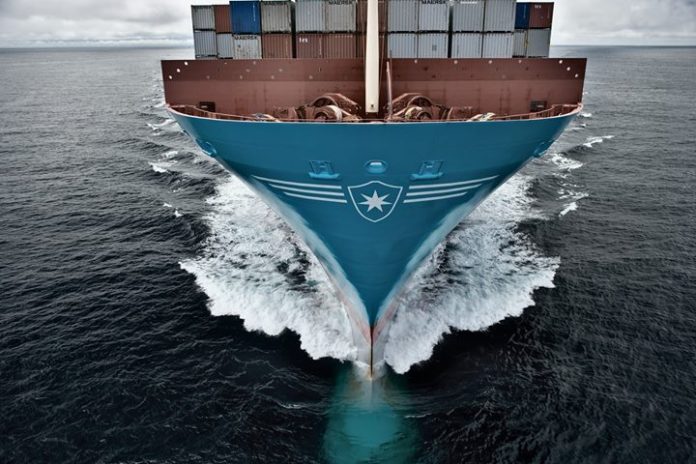AP Møller-Maersk improved earnings and free cash flow in 2019, despite weaker market conditions and global container growth of only 1.4%. Earnings before interest, tax, depreciation and amortisation (EBITDA) improved 14% to US$5.7 billion compared to 2018 and the EBITDA margin increased to 14.7%.
Revenue decreased slightly to US$38.9 billion in 2019 from US$39.3 billion. Free cash flow was US$6.8 billion, compared to US$5.1 billion last year and CAPEX declined by US$1.2 billion to US$2 billion in 2019.
“Despite weaker market conditions, AP Møller-Maersk was able to improve profitability and cash flow. Our cash return was healthy, and we continued the reduction of net interest-bearing debt, leading to a further deleveraging of USD3.3 billion over the year,” said Søren Skou, CEO of AP Møller- Maersk.
In Ocean, EBITDA in 2019 increased 15% to US$4.4 billion and the EBITDA margin of 15.3% increased by 2%, driven by a lower cost base. Revenue was US$28.4 billion with a small decrease in volumes to 13.3m FEU. Unit costs at fixed bunker prices decreased by 1.7%, mainly due to improvements in capacity management and foreign exchange rate developments.
In 2019, EBITDA in Logistics & Services increased 24% to US$238 million with an EBITDA margin of 4%, while revenue decreased slightly to US$6 billion from US$6.1 billion, driven by a decrease in sea and air freight forwarding activity, which was only partly offset by an increase in warehousing and distribution.

Terminals & Towage reported an increase in EBITDA of 11% to US$1.1 billion with an EBITDA margin of 28.4% in 2019. Revenue increased 3.2% to US$3.9 billion. In gateway terminals, EBITDA increased by 17% to US$902 million, reflecting an increase in EBITDA margin to 28% and revenue increased by 4.1% to US$3.2 billion. The positive development was driven by a ramp-up of the new terminal in Moin, Costa Rica, higher volumes, higher storage income and reduction in SG&A.
Net interest-bearing debt decreased through the year to US$11.7 billion from US$15 billion in 2018. In 2019, US$1.3 billion was distributed to shareholders via ordinary dividends and share buy backs. An ordinary dividend equal to US$469 million was paid to shareholders and as part of the share buy-back programme announced in May 2019, the company bought back shares worth US$791 million.
Maersk reported a cash return on invested capital improvement for the full year of 9.3% due to strong cash flow.
Furthermore, non-Ocean revenue increased by 0.1%, when adjusted for the closing of production facilities in Maersk Container Industry. Strong revenue growth in gateway terminals was offset by declining freight forwarding activities. Gross profit in Logistics & Services grew 8.7% to US$1.2 billion, reflecting a gross profit margin of 20%.
Synergies harvested from the Hamburg Süd acquisition and the integration of transport and logistics reached US$1.2 billion, which is above the expected target.
The long-term target on return on invested capital after tax grew to 3.1% in 2019, compared to 0.2% the year before.
2020 Forecast
AP Møller-Maersk expects an EBITDA of around US$5.5 billion, before restructuring and integration costs.
The organic volume growth in Ocean is expected to be in line with or slightly lower than the estimated average market growth of 1.3% for 2020.
Maersk has noticed that the outlook and guidance for 2020 is subject to significant uncertainties related to the current outbreak of the Coronavirus in China and the implementation of new IMO 2020 fuel regulations.
The company added that the accumulated guidance on CAPEX for 2020-21 is still US$34 billion and a high cash conversion (cash flow from operations compared to EBITDA) is expected for both years.







